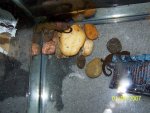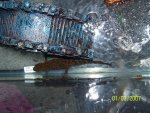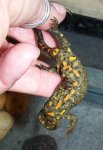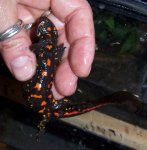- Joined
- Dec 13, 2006
- Messages
- 6,618
- Reaction score
- 102
- Points
- 63
- Location
- Wappingers Falls, NY
- Country
- United States
If you go into a pet store in the US and get a Paramesotriton, which one is the most likely for it to be?
I know it's hard to tell them apart. This is what I got today, I know it's not the greatest picture. I think two are male and one is female. The female is mossy colored.
thanks
I know it's hard to tell them apart. This is what I got today, I know it's not the greatest picture. I think two are male and one is female. The female is mossy colored.
thanks






